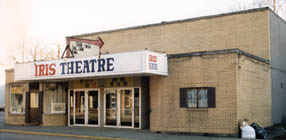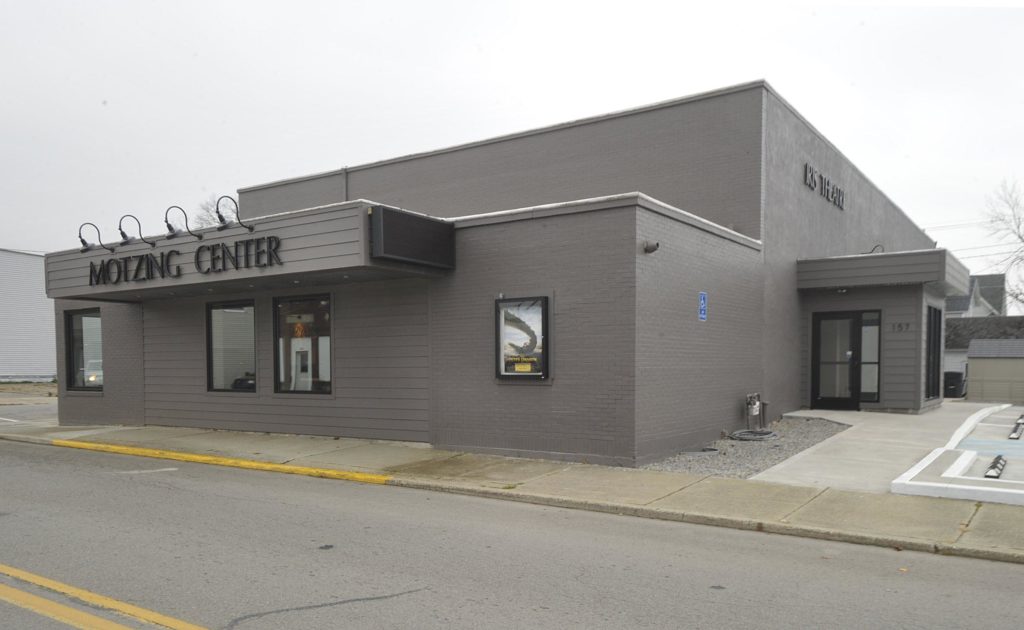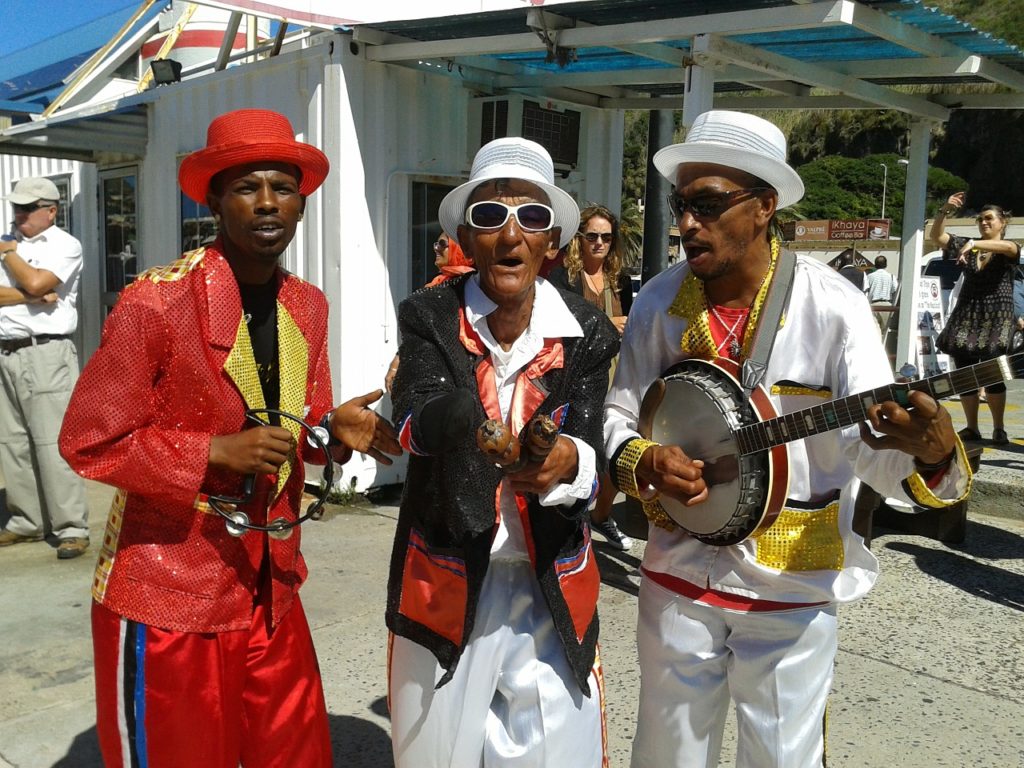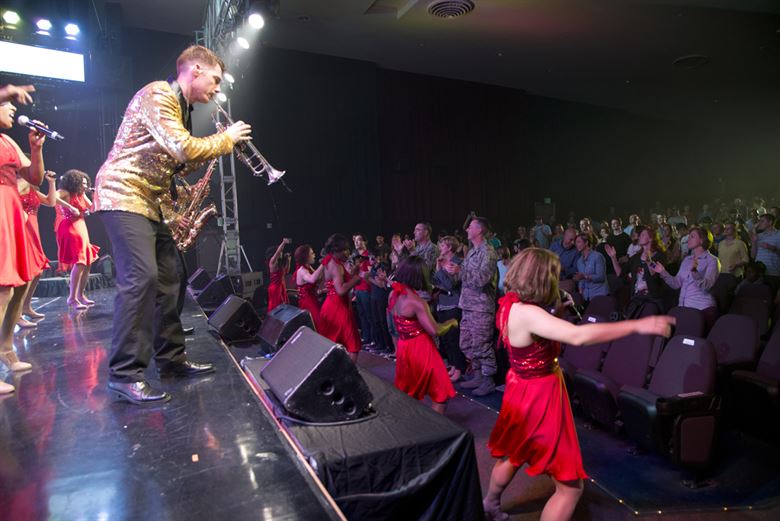Cochranton, Pennsylvania is a borough in the hilly rural area between Pittsburgh and Erie. It was founded in 1855, named for Thomas Cochran. It’s in farming country, with a population of around 1200. As it is in so many small towns across America now, many of the storefronts on its main street are long empty. But the community endures and so does one of its treasures that has survived recessions, a downtown fire and television. That would be the Iris Theater.

An Iris is Not a Rose
The Iris Theater was built in 1947 by local construction contractor W.L. Dunn. The project was for his wife Iris. What a gift! She must have really loved movies. By extension, it was a tremendous gift for this tiny town.
A massive fire in the business district in 1962 or possibly a bit earlier leveled at least a couple buildings and threatened the entire block. Fortunately, the Iris was a block west and was not damaged.
The theater lost some appeal to the baby boomer generation in the mid-1960s. Teenagers had cooler things to do in the larger neighboring towns. The Iris wasn’t making a profit and it was shut down, much to the dismay of the town folk. It sat there with its humble marquis, stuck in time, with its locked glass doors offering a view into the lobby and into the past.
Revival
In 1971, Jack and Grace Motzing took on this labor of love by reopening the Iris Theater. Jack became the projectionist while Grace sold tickets and refreshments. Mr. Dunn did his part, too, allowing the Motzings to operate the theater rent free.
I sense that Cochranton collectively exhaled upon learning the Iris was once again open. Things were as they should be, at least in one important way. The same couple operated it for 42 years, staying with their intention of providing films for the entire family. Wholesome entertainment was of great importance to them. Eventually, they bought the theater from Dunn’s estate for $12,000.
The Motzings also made the theater a ministry, holding Christian Cinema Night one night per month. At these showings, people would give testimony as to their faith. It’s estimated that more than 5,000 attendees became Christians during these events.
When Jack and Grace retired from the theater business in 2013, they sold it to Cochranton Community Church for…$12,000! The church managed it for a while, but the plan was to re-purpose the enterprise in an ingenious way.
Brilliance
Prior to all that, a community organization attempted to initiate a plan to take over the theater’s operations. When that failed to materialize, Pastor Steve Clulow of the above-mentioned church presented the idea to save the theater to his congregation. He envisioned a full restoration, estimating it would cost between $250,000 and $300,000.
Amazingly, the idea was embraced. The church’s general fund was used for $100,000 toward the goal. A fundraising campaign pulled in $190,000. Another $10,000 came from miscellaneous sources. These figures symbolize a monumental love for the Iris and this small community.
Now for the brilliant part of it. I don’t know who deserves credit for it, but someone suggested creating a coffee lounge in the old lobby. Pastor Clulow included that as part of his cost estimate for the project. So now, this center for the arts is a place where people can meet and have coffee four days a week from early morning to evening in Kovfino-The Coffee Lounge. The movie house is still called The Iris Theater and the building is known as the Motzing Center.

Safe and Secure
The church is using the Motzing Center as a part of their Christian ministry, but true to the Motzing family model, the theater is the theater. It’s a place for the Cochranton community to see films. No, you won’t see sex and violence on the screen. The movies are family-oriented and uplifting, but that doesn’t equate to inferior entertainment.
Most importantly, the theater has stable backing and a coffee lounge that will help it meet its financial obligations. The church isn’t going to take any money from the earnings of the Motzing Center. It should be able to stand on its own. That gorgeous gathering place for coffee and movies should be an attraction that this grateful community can support.
Now let’s see…what’s on the bill for upcoming movies? Well, there’s the animated version of The Addams Family, Abominable, Malificent: Mistress of Evil and Ford v Ferrari, just to name a few. All for $5.00 for ages 13 and up, $3.00 for ages 2-12.
I need to get in there sometime to enjoy the ambiance. You see, I live in Arizona now, but my adolescent years were in Cochranton and it feels like my hometown even though I wasn’t born there. On my next trip there, I’ll have to drop by the Iris for one of those feel-good flicks.



